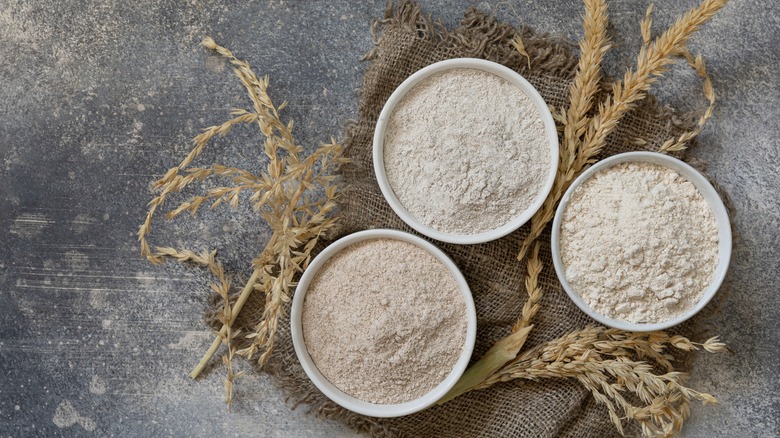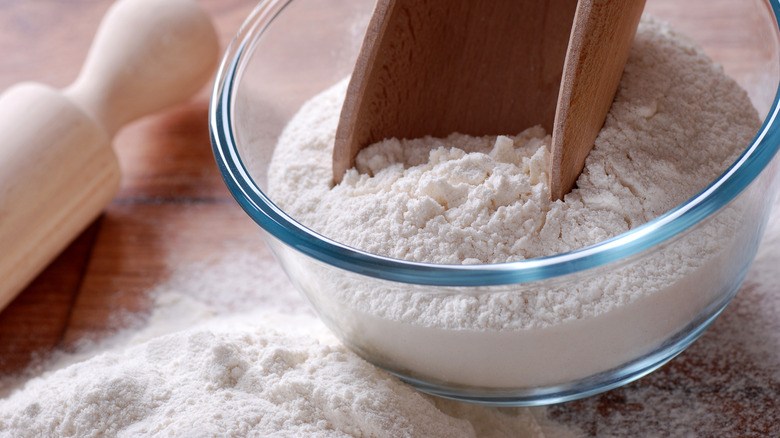What's The Difference Between Meal And Flour?
If you've ever tried to make French macarons then you've inevitably needed to find the high-priced key ingredient — almond flour. It's also likely then that you've found yourself standing in the grocery store holding a bag of almond flour in one hand and a bag of almond meal in the other. The two look remarkably similar. They're both made from almonds; and, with the naked eye, they seem to be exactly the same. So, does it matter which one you buy?
The only difference between the terms "meal" and "flour" — when it comes to ground grains, cereals, and nuts — is the size of the particles. "Meal" will more often be used to refer to something that is a coarse grind with larger particles than you would find in a bag of wheat flour. "Flour" — even when it's referring to nuts or grains like wheat and corn — is typically closer to a fine powder. There are some limitations and exceptions to this; but, for the most part, this is the only difference. Though it should be noted that some British English speakers use the term "corn flour" to mean cornstarch, and these two products are not interchangeable.
Choosing one over the other might not always make a difference, but there are subtle ways that particle size can influence your baking.
How particle size affects bakes
One way that particle size will affect your bake is its rate of hydration absorption. Smaller grains, like those found in flours, will have a higher rate of water absorption. That means that meals will take longer to fully absorb whatever liquids are added to your recipe. This might not spell disaster if you're aware of it, but will certainly affect the baking process if you are trying to substitute one for another. Autolysing can help to combat this because it will give your flour or meal more time to absorb the water in your recipe, regardless of grind size.
In the case of wheat particles, the particle size can also directly affect nutritional content. When wheat grains are milled down into a fine powdery flour, the endosperm, which contains much of the nutritional value, is also damaged. That means that the more-available nutrition is starch, which our body breaks down as simple carbohydrates that can cause blood sugar to spike.
However, this isn't as important for nut flours and meals. Almonds can be broken down into almond butter without losing much of their nutritional content. Grains like wheat and corn are different because their nutrition is separated between the endosperm, germ, and other parts.
The full spectrum
Meal and flour aren't the only available particle sizes. They might be the most common because they tend to fall in the middle and are the most available, but you can still go further in either direction between coarse and fine.
00 flour is the term used in Italian mills to describe superfine wheat flour. This superfine flour is prized as the best flour choice for a Neapolitan pizza. This is due to its ability to absorb water quickly in this high-hydration dough. Nut flours aren't typically able to reach this superfine state because they break down too much and begin to turn into a butter instead.
More coarse grinds also exist and are sometimes referred to as "grits." What are grits exactly? In culinary terms, grits are a very coarse ground form of corn or hominy.
Grind size might seem like a small factor in the grand scale of putting a proper recipe together, but it can absolutely influence the final outcome of a dish or baked good.


